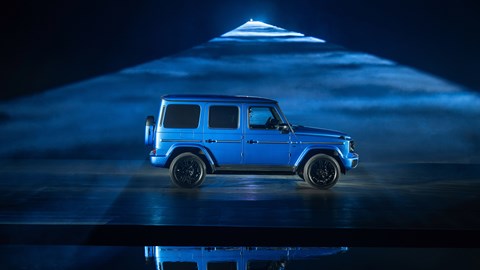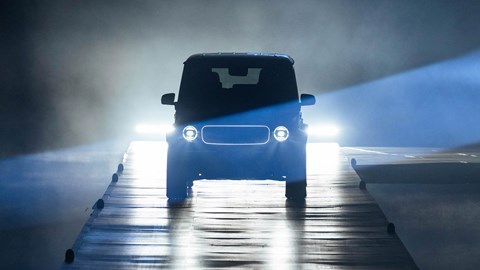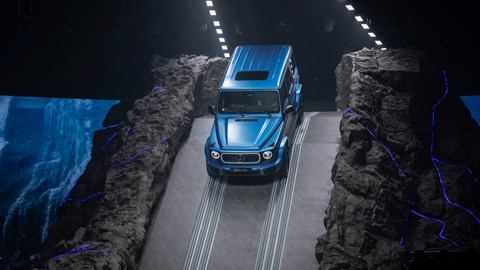► New electric G revealed in Beijing
► Looks like the previous car…
► …But features a few aero tweaks
The electric G-Class is here, and it represents two firsts for Mercedes. It’s the first Mercedes EV to exist without specific EQ branding – it’s also the first electric product from Stuttgart that doesn’t look like a streamlined, land speed record car.
Where the EQ series uses tech such as wing-mounted cameras, aero wheels and bulbous grilles to slip through the air, the electric Gelandewagen makes do with the same shoebox profile as it always as. Let’s be honest, although iconic, the G-Wagen’s side profile alone probably gives Adrian Newey reoccurring nightmares.

So, how has Mercedes retained those iconic G-Class looks while keeping the range in the triple figures? We spoke to Robert Lesnik, Mercedes’ Director of Exterior Design to find out how Stuttgart made the G go EV.
A balancing act
‘At a certain point, to make something electric does not make sense if you don’t offer certain range to a customer,’ Lesnik admits. ‘If you would have a car with 100km range, that would not make sense. So, there are certain expectations that you have to fulfil.’
That’s true of any of EV, but the G-Class comes with a whole separate set of boxes to tick. Much like a Rolex Submariner, it’s a tool that’s become more luxurious and refined all the time – but it still has to look like the original model that started the whole brand. That’s the problem with improving icons; you can’t really change them too much.

‘You cannot change the character – you do not want to change the character. You don’t want to change it because then nobody will by it because it’s not the G anymore.’
‘So, what do you do with a car like this, a shoe box.’
Getting the numbers
Although the facelifted G looks almost identical to the previous car, it features a range of aero tweaks designed to keep its drag co-efficient this side of a building. Have a quick glance and you’ll miss them- but look closer and they reveal themselves. ‘From 20 metres you should not spot the difference,’ says Lesnik. They’re small but they add up.
Updated G-Class models get reworked A-Pillars, which Merc says massively reduces turbulence. Look toward the top of the windscreen and you’ll also see a spoiler which helps cut down on the largest amount of drag. At the rear, air curtains around the wheel arches make the new G-that bit slinkier.

Exclusive to the electric G is a new bonnet that has been slightly reprofiled to massage the air rather than render it unconscious. Put all the above together and the EV G achieves a drag rating of .44 and WLTP figure of around 300 miles. That’s double the drag of an EQS for example, but impressive given the number of 90-degree lines on the G.
This process wasn’t easy, though. ‘You know, we were often in the wind tunnel,’ Lesnik explains. ‘These days you can simulate every car very close that what you’ll get in the wind tunnel.
‘The G- is the only car where that simulation didn’t work at the end – it was completely wrong. It was done for every other car, but not for this.’
‘So then, you have to rethink everything and start from scratch and not give up because at the end, if you end up with 100km nobody will approve this car.’

What it means
Improvements in battery tech are slowly giving designers some extra slack. For Mercedes, the EQ class was a one-generation introduction to the electric future, but now Stuttgart is moving to the electric present. That’s why the G-Class is called the Mercedes G580 powered by EQ Technology, and not the EQG as its codename originally suggested.
Styling will change too, as brands like Mercedes draw from their most classic designs as they look to differentiate their EVs from increasing competition.